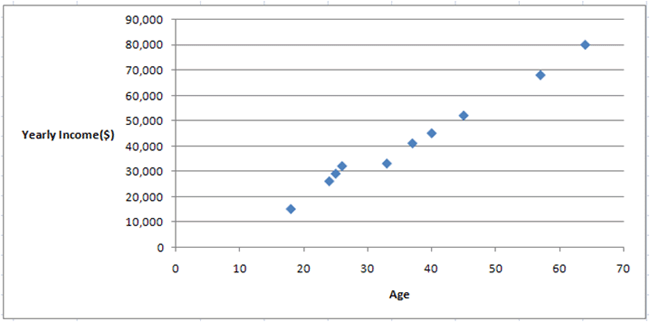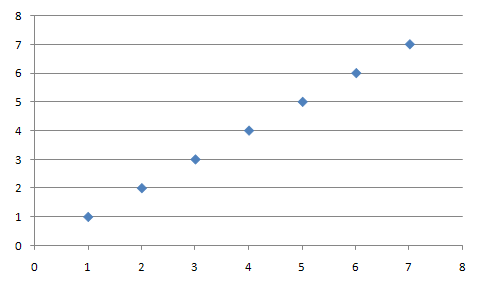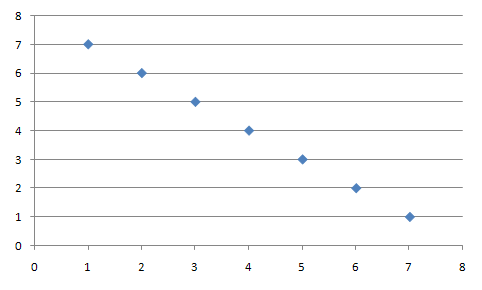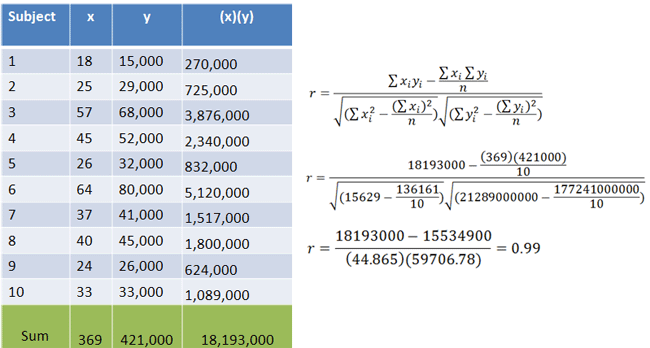In the previous lecture on scatter plots, we made a scatter plot for some sample bivariate data and concluded that the two variables were probably related.

|
Figure 1. |
|---|
We can use this data to calculate Pearson's r
| Pearsonís r |
|---|
|
Pearsonís r measures the strength of the linear relationship between two variables. Pearsonís r is always between -1 and 1. |
Here is a perfect positive relationship. r is equal to 1.0:

|
Figure 2. |
|---|
Here is a perfect negative relationship. r is equal to -1.0:

|
Figure 3. |
|---|
Here is an example of data that has no relationship. r is somewhere close to 0.0:

|
Figure 4. |
|---|
Pearson's r is calculated with the following equation:

|
Figure 5. |
|---|
Plugging in the values from our original example with ages and yearly incomes, we can calculate the following r:

|
Figure 6. |
|---|
This r is almost 1.0, so we can conclude that x(Age) and y(Yearly Income) have a strong positive relationship. As one increases, the other tends to increase as well.